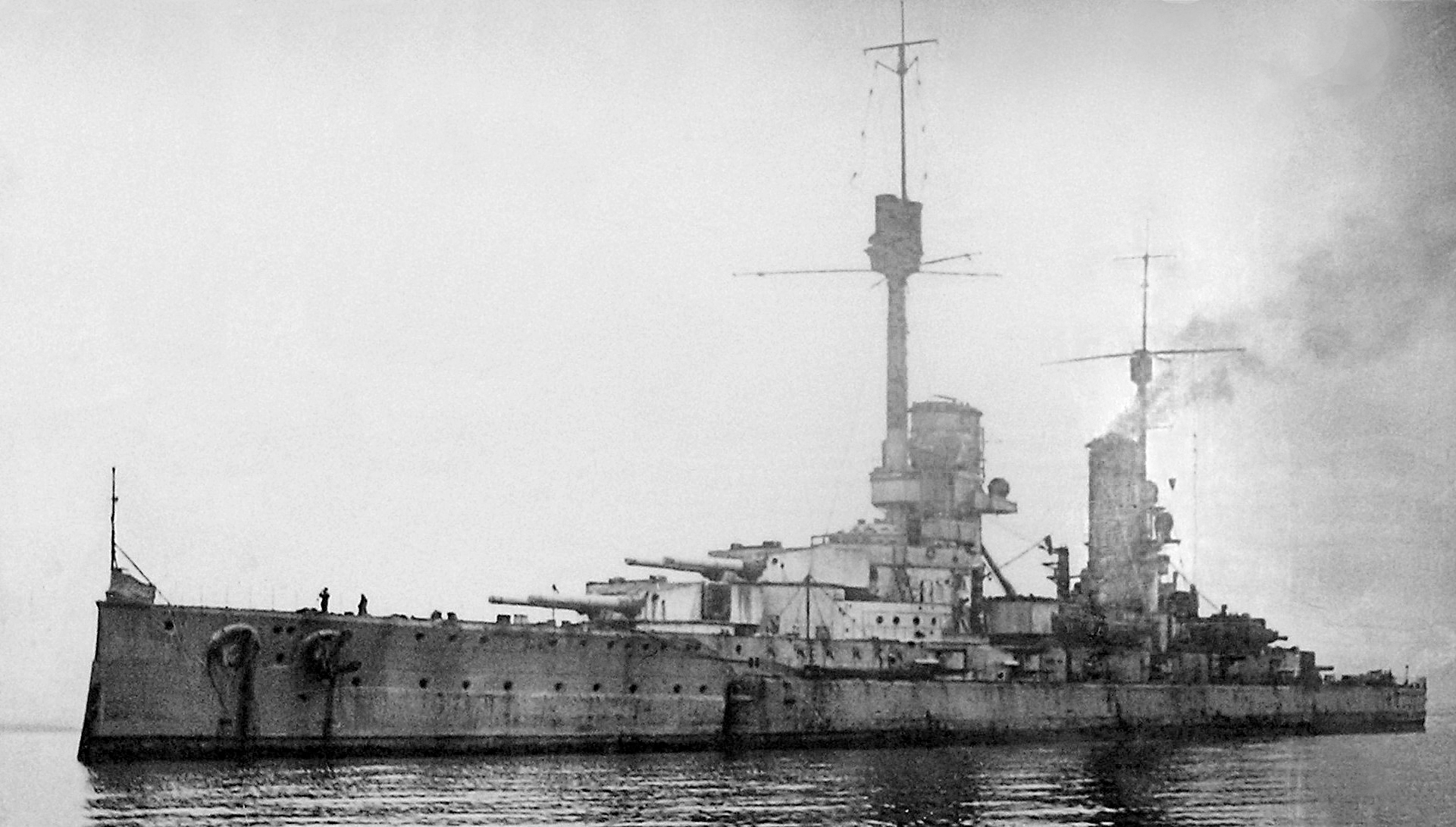SMS Kronprinz was the last battleship of the four-ship König class of the German Imperial Navy. The battleship was laid down in November 1911 and launched on 21 February 1914. She was formally commissioned into the Imperial Navy on 8 November 1914, just over 4 months after the start of World War I. The name Kronprinz (Eng: “Crown Prince”) refers to Crown Prince Wilhelm, and in June 1918, the ship was renamed Kronprinz Wilhelm in his honor. The battleship was armed with ten 30.5-centimeter (12.0 in) guns in five twin turrets and could steam at a top speed of 21 knots (39 km/h; 24 mph).
Along with her three sister ships, König, Grosser Kurfürst and Markgraf, Kronprinz took part in most of the fleet actions during the war, including the Battle of Jutland on 31 May and 1 June 1916. Although near the front of the German line, she emerged from the battle unscathed. She was torpedoed by the British submarine HMS J1 on 5 November 1916 during an operation off the Danish coast. Following repairs, she participated in Operation Albion, an amphibious assault in the Baltic, in October 1917. During the operation Kronprinz engaged the Tsesarevich and forced her to retreat.
After Germany’s defeat in the war and the signing of the Armistice in November 1918, Kronprinz and most of the capital ships of the High Seas Fleet were interned by the Royal Navy in Scapa Flow. The ships were disarmed and reduced to skeleton crews while the Allied powers negotiated the final version of the Treaty of Versailles. On 21 June 1919, days before the treaty was signed, the commander of the interned fleet, Rear Admiral Ludwig von Reuter, ordered the fleet to be scuttled to ensure that the British would not be able to seize the ships. Unlike most of the other scuttled ships, Kronprinz was never raised for scrapping; the wreck is still on the bottom of the harbor.













